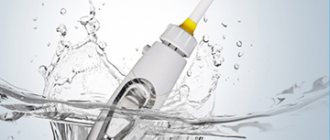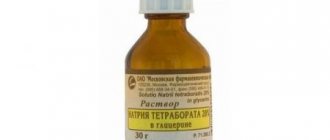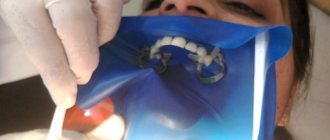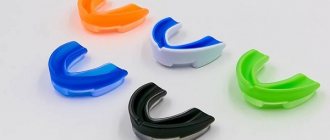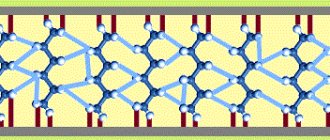We still have a jar of blue in the cabinet with household chemicals. And you? But how well do you know the information about the purpose of the blue? Want to know more about what it's for and how to use it? In this case, this article will be useful to you.
Now let’s make it clear that this thing has nothing to do with alcohol... And also, you shouldn’t joke that this has anything to do with the movie “Avatar”. We will try to talk about it seriously.
Let's start with the fact that it is a dye. Blue has a bactericidal effect and many others. By the way, the purpose of blue in medicine has already been proven. They even clean aquariums with it.
Its popularity is due to the fact that it was something new for that time. Well, don’t forget that this is still a useful invention. Actually, this was the reason that she was in every house. It may still be stored somewhere in your locker. In addition, this is a fairly budget-friendly product.
How can you dye fabric white?
How to dye fabric white
Painting a thing
white
will not work.
But the product can be discolored. This is done using Belizna or Domestos cleaning product. for thin and delicate fabrics
.
Interesting materials:
What is Uber's commission? Which chicken is healthier, boiled or baked? Which lamp produces more heat? What is the maximum depth of the World Ocean? What was the maximum radiation in Chernobyl? What is the maximum speed of the bus? Which laptop brand is the most reliable? What is the minimum salary in South Korea? Which laptop model is the best? What milk causes acne?
Secrets for ladies
We learn how to paint various fabrics with blue. Household blue is a mixture of dye and starch, which is sold in powder or liquid form. Typically, bluing is used to add freshness to bed linen or white shirts made of cotton and linen, and less often - to tint fabrics.
Blue comes in two types: with soluble and insoluble dye. Insoluble dye is cheaper, but is only suitable for refreshing laundry. Soluble can be used for dyeing fabrics.
Choice of blue
In order to paint with blue, you must initially choose the right material. It should be taken into account that:
- The blue must be water soluble. In this case, it is possible to achieve uniform dyeing of fabrics - insoluble dyes give streaks when used in concentrated quantities.
- It doesn’t matter whether you choose powder or liquid - both should be diluted in water until completely dissolved before use.
- Blues can be used both during washing and while rinsing clothes. For dyeing, it is better to choose a blue dye intended for rinsing.
- Blue can be used to dye white fabric or to freshen up blues and light blues. It will not change dark colors, but on other light fabrics it can give an unpredictable result. Most often, classic colors of jeans are tinted with blue.
- It should be noted that only natural fabrics can be dyed with blue; it does not stain synthetics.
Coloring
To stain with blue you need:
- Wash the item that needs to be dyed and rinse the powder until clear water.
- Dilute the blue according to the instructions. There should be no clumps of coloring matter in the water; it should be of a uniform color.
- Fill the bath with water for dyeing.
- Place the item in the bathroom. It is important that the fabric is evenly spread out (twisting, folding and bending may result in uneven dyeing - this is why it is recommended to dye in the bathtub and not in a basin or other container). The water should completely cover the item being painted. To lightly turn the linen blue, it takes a few minutes, to dye it – from 1 hour. For jeans, 2 hours is usually enough.
- Dry the fabric in a straightened state - the color may change in folds and creases.
Recommendations
When painting with blue, you must remember that:
- High-quality blue does not stain your hands or bathtub. If traces of bluing remain, the item can be damaged during bluing - the fabric will become stained.
- Blue cannot be called a permanent dye - the item will fade with each wash, and the procedure must often be repeated again. To obtain a lasting effect, you should use special fabric dyes.
To preserve the natural blue color of the item longer, you can add a little regular table salt to the water when rinsing.
How to dye jeans at home
The content of the article
Every year, fashion designers create a certain trouser design that instantly flies around most countries of the world. Blue or “washed” jeans, decorated with rhinestones, sequins, and beads, are approved by the majority of the fair sex. The pricing policy varies depending on the decor and the original shade, as a rule, it is quite high. In order not to spend hard-earned money, many girls resort to home dyeing, which helps restore the original color of jeans.
Methods for dyeing jeans
- Blue. The first place rightfully goes to blue, it is one of the more affordable preparations and fits perfectly on fabric. Short-term durability is considered a negative characteristic of coloring. The composition is washed out of the fiber structure almost after the first wash. If you prefer this method, be prepared for the fact that the color of your trousers will have to be regularly updated.
- Powder. Free-flow dyes are very popular because they can be poured directly into the washing machine. During wet processing, the color of the fabric is renewed. A negative feature is that powder dyes have a fairly small range of colors.
- Potassium permanganate. The dyeing technology requires attention to detail; the method is not considered simple. However, in the end you will be able to get everyone’s favorite “varenka”, which occupies a leading position in the fashion world.
- Acrylic. Dyes based on this type are considered super-resistant; thanks to the unique composition, jeans can be washed in a household machine and even boiled. After final drying, the painting with acrylic paints ceases to react to external factors, which is an undeniable advantage.
- Special composition. A gel or suspension can be purchased at a hardware store to change the original color of denim. The disadvantage of this method is the high pricing policy, the advantage is the long-lasting effect. An analogy to technology is the use of hair dye as a means of updating the color of trousers.
how to quickly dry jeans after washing
How to dye jeans in a washing machine
- Select the coloring powder of the desired shade, dilute it according to the instructions. As a rule, at 45 gr. product is 0.5 liters of water.
- After dilution, stir the solution with a spatula until the granules are completely dissolved, making sure there are no lumps.
- Next, add 15 grams to the solution. chopped salt and 10 g. soda, stir again. Such components are needed to maintain color; they are added to the powder if there are manufacturer’s recommendations.
- Place the jeans in the machine and set them to the longest wash cycle (about 2 hours). Usually, the processing function for cotton and linen is suitable, as long as the temperature is at least 90 degrees.
- Pour the dye solution into the special compartment and wait until the cycle completes. After this, take out the jeans and start preparing the soaking mixture.
- Pour 5 liters of water into a basin, add 325-350 ml. table vinegar (concentration 6-9%). Place the trousers in the container and wait a quarter of an hour.
- Rinse the jeans with your hands, then put them in the machine again, set to the shortest wash (20-30 minutes) at a temperature of 35-40 degrees. Be sure to add powder to remove excess paint.
Important! During subsequent washes, treat jeans separately from light-colored laundry. After washing your trousers, set the machine to double rinse and add bleach or bleach to remove the pigment from the drum cavity.
how to make ripped jeans at home
How to dye jeans in a pan
- Choose the optimal container in which to dye your jeans. An enamel pan with a thick bottom and walls or a bucket will do.
- Dilute the powder dye according to the manufacturer's recommendations, stir until the crystals dissolve. Add soda and salt if the instructions require it, then proceed with the procedure.
- Pour 8 liters of water into a pre-selected container, add the prepared pigment there, and mix thoroughly again. Place the bucket/pan over medium heat, bring the solution until the first bubbles appear, then reduce the power to low.
- Place the jeans in a container, press them down using tongs or a wooden spatula, and boil for 1 hour. Stir the solution periodically and turn the trousers over so that they are colored evenly.
- After the specified period, wait until the solution cools at room temperature, then remove the jeans from the container with tongs. Rinse them by hand.
- Prepare a solution by mixing 5 liters of water with 300 ml. vinegar, soak jeans in the mixture, wait 20 minutes. After that, wash them in a machine at 40 degrees, add conditioner and powder.
how to stretch jeans at home
How to dye jeans blue
- It is important to understand that bluing is suitable for short-term dyeing. It doesn't give the jeans a completely new color, but just makes them an order of magnitude bluer. The pigment is washed out after 2-3 washes.
- The ineffectiveness of the method is easily offset by the relative simplicity of the procedure. Prepare the blue solution strictly according to the instructions, soak the trousers in the resulting mixture, leave for 3-4 hours.
- Do not forget to stir the mixture periodically so that the trousers are stained evenly. After the specified time has passed, begin preparing the soaking solution.
- Dilute table vinegar in a basin and rinse your jeans in it. Repeat the procedure until the water turns light. Replace the old vinegar solution with a new one as you use it.
How to dye jeans with potassium permanganate
- Every year, the so-called “washed jeans”, which came to us from the 80s, are gaining more and more popularity. A similar effect can be achieved using the well-known potassium permanganate.
- A positive feature of the technology is considered to be the complete absence of boiling; coloring is performed without heat treatment.
- To create a “varenka”, prepare 80 grams. potassium permanganate (potassium permanganate) and 135 ml. table vinegar with a concentration of 6 to 9%. You will also need a 3% hydrogen peroxide solution in an amount of 30 ml.
- Mix the listed components into one composition, dilute with water in a ratio of 2:1. Twist the jeans with a rope and secure with white elastic bands.
- Place the trousers in the solution and leave for 20 minutes. Every 5 minutes, “drown” the product in the mixture so that it does not float. After the specified period, remove the jeans.
- Rinse them by hand, then put them in the machine for a double rinse. Add gel powder and fabric softener.
It is not difficult to dye jeans if you have sufficient knowledge regarding the available methods. Carry out the technology using potassium permanganate; purchase a special powder at a hardware store to change the color of the fabric. Decorate the trousers with acrylic paints, giving them the desired design. Consider dyeing with special gel pigments that are designed for denim.
how to whiten jeans
Video: how to dye jeans
howtogetrid.ru
How to paint with blue
Blue is used to lightly dye fabric when washing, to eliminate the yellow tint of linen and make it white. It is a mixture of blue dye and starch and can be sold in liquid or powder form. It is better to use blue to give a tint to fabrics made from natural fibers - cotton, linen and silk.
You will need
- blue - water - container (or bath) for diluting the solution
Posting Sponsor P&G Articles on the topic “How to paint with blue” How to choose a powder How to clean a humidifier How to lay brickwork
Instructions
1
Buy blue at a household chemicals store; when choosing, pay attention to the composition. The dyes in the composition can be soluble (indigo carmine, blue aniline dyes, soluble Paris blue, Prussian blue) and insoluble (ultramarine, insoluble Paris blue). The more expensive ones include aniline dyes (methylene, methyl and wool blue), and the cheaper and more frequently used are ultramarine. Soluble dyes provide the most uniform coloring, insoluble dyes do the opposite.
2
Read the instructions and act according to them. Please note that some types of blue are applied during the washing process, others - during the final rinse. 3 Take 0.3 g of blue per 1 kg of dry laundry, stir the blue in cold water, then pour into warm water (the amount of water depends on how rich the shade you need). If necessary, boil the solution until it becomes clear and no clots remain, strain through cheesecloth, dilute with water to the desired color intensity. Or immediately place the blue in warm water in a bag made of several layers of gauze.
4
Lower each item straightened out and soak in the warm solution for the prescribed time. It’s better to place things in blue not together, but one at a time. Pay attention to the instructions on the package - the soaking time should be indicated there.
5
If desired, also use blue to refresh the color of faded or faded jeans, clothing made from natural fabrics with bluish tints, or to give white items this shade. In order not to spoil the thing, try applying blue to a sample of fabric, or even better, practice first on old unnecessary things. Experiment with the concentration of blue to ensure the desired brightness of the color. How easy it is dokak.ru
Starch: the final stage
The last step left is to starch the tulle at home. This will give the sheer curtains shape and extra shine.
- Dissolve 250 g of dry starch in a bowl of water (about 10 liters), mix well until smooth.
- Soak the washed curtains in the solution for five hours.
- Take it out of the water.
- Don't squeeze, let it drain.
There are many ways to quickly bleach tulle at home. If you are not satisfied with one method, try another. Do not forget and do not be lazy to wash the tulle, as dust collects in it, causing respiratory diseases. The health of all family members depends on the cleanliness of your apartment.
blue for linen in stock. This is a powder for quickly enhancing the color of white or blue bedding and clothing made from natural fabrics. Currently, there are many powders that contain bleaches and various color additives for additional color saturation. But nevertheless, blue remains the most accessible substance, which gives fabrics not only freshness and newness, but also the desired shade if the blue substance is used as a dye.
Blue is most often starch, the composition of which is combined with blue mineral paint, mainly ultramarine, blue aniline dyes, indigo carmine, Paris blue or Prussian blue. Household blue is available in liquid, paste or powder form and is divided into two types: soluble and insoluble. Dyes that are highly soluble in water guarantee more uniform toning, coloring and saturation. Insoluble ones are much cheaper and are mainly suitable for refreshing linen made from natural fabrics. You can buy fabric blue in any store in the household chemicals department.
